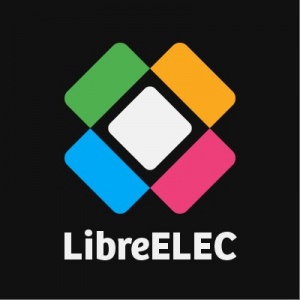[et_pb_section admin_label=”Section” fullwidth=”on” specialty=”off”][et_pb_fullwidth_menu admin_label=”Fullwidth Menu” menu_id=”2132″ background_color=”#31afe1″ background_layout=”dark” text_orientation=”center” submenu_direction=”downwards” fullwidth_menu=”off” dropdown_menu_animation=”fade”] [/et_pb_fullwidth_menu][/et_pb_section][et_pb_section admin_label=”Section” fullwidth=”on” specialty=”off” transparent_background=”off” allow_player_pause=”off” inner_shadow=”off” parallax=”off” parallax_method=”off” custom_padding=”||0px|” padding_mobile=”off” make_fullwidth=”off” use_custom_width=”off” width_unit=”on” make_equal=”off” use_custom_gutter=”off” gutter_width=”3″][et_pb_fullwidth_post_title admin_label=”Fullwidth Post Title” title=”on” meta=”on” author=”off” date=”on” categories=”on” comments=”off” featured_image=”on” featured_placement=”above” parallax_effect=”on” parallax_method=”on” text_orientation=”center” text_color=”dark” text_background=”off” text_bg_color=”rgba(255,255,255,0.9)” module_bg_color=”rgba(255,255,255,0)” title_all_caps=”off” meta_font_size=”14″ use_border_color=”off” border_color=”#ffffff” border_style=”solid” title_font=”Abel|on|||” title_font_size=”36px” meta_font=”Abel||||”] [/et_pb_fullwidth_post_title][/et_pb_section][et_pb_section admin_label=”section” transparent_background=”off” allow_player_pause=”off” inner_shadow=”off” parallax=”off” parallax_method=”off” custom_padding=”0px|||” padding_mobile=”off” make_fullwidth=”off” use_custom_width=”off” width_unit=”on” make_equal=”off” use_custom_gutter=”off” gutter_width=”3″][et_pb_row admin_label=”row” make_fullwidth=”on” use_custom_width=”off” width_unit=”on” use_custom_gutter=”off” gutter_width=”3″ padding_mobile=”off” background_color=”#ffffff” allow_player_pause=”off” parallax=”off” parallax_method=”off” make_equal=”off” parallax_1=”off” parallax_method_1=”off” parallax_2=”off” parallax_method_2=”off” column_padding_mobile=”on”][et_pb_column type=”2_3″][et_pb_text admin_label=”Text” background_layout=”light” text_orientation=”left” text_font=”Abel||||” text_font_size=”18″ use_border_color=”off” border_color=”#ffffff” border_style=”solid”]
Kodi LibreELEC is a new fork of OpenELEC that gives you Kodi on fast operating system. Like OpenELEC, LibreELEC is optimized for the Raspberry Pie and Chromebox. Read on for more info!
LibreELEC Latest Version: v7.0.2
What is LibreELEC?
LibreELEC is a “just enough operating system” that is tweaked and specialized for running Kodi. It is a fork of OpenELEC and supports the Raspberry Pie, WeTek Kodi box, and a generic build suited for Intel processors (Chromebox).
How is LibreElec different than OpenELEC?
- LibreELEC team members set project goals, priorities, and take executive decisions. The board ensures project tasks are distributed among volunteers.
- LibreELEC intends to publish a mid-term release schedule. Our goal is to never leave you (or ourselves) guessing when the next maintenance or public beta release will arrive.
- LibreELEC intends to be a stable and bleeding-edge distribution. The active release branch will be frozen at release and future maintenance updates will contain fixes for reported user and security issues plus minor hardware support changes only.
- LibreELEC intends to be non-profit in nature with public funding goals and public updates on our progress towards those goals.
- LibreELEC intends to have minimal advertising on our website and forums.
- LibreELEC sponsorships will be for an agreed fixed-term.
- LibreELEC welcomes community builds and encourages people to submit additional projects and device sub-projects to our central GitHub repo.
Kodi LibreELEC Install Guide
If you have a Kodi LibreELEC capable Kodi box, like the Raspberry Pi or Chromebox, here is how you can install LibreELEC:
- First, grab a USB or MicroSD card that is either blank or that you don’t mind if everything on it is erased. 4GB minimum is recommended.
- Download a disk image suited for your device off of the LibreELEC website by clicking here.
- Depending on whether you run Windows, Mac, or Linux, follow the guide on this page to write the LibreELEC image to your USB/SD card.
- Plug your USB or SD card into your Kodi box, turn it on, and follow the prompts!
And that’s it! If you install LibreELEC onto your Kodi box, let us know how it works for you by getting in touch with us on Twitter or Facebook.
PROTECT YOURSELF ON THE INTERNET
Sign up for a premium Kodi VPN and access the internet unrestricted. We offer exclusive discounts for IPVanish and NordVPN, the highest respected VPNs in the Kodi community. Both of these VPNs have some great features for users:
Apps for Android, iOS, Mac, Linux & more
Zero Logs
Unlimited bandwidth
Tier 1 hardware (no speed slowdown)
Access to servers hundreds of VPN servers


[/et_pb_text][/et_pb_column][et_pb_column type=”1_3″][et_pb_sidebar admin_label=”Sidebar” orientation=”left” area=”et_pb_widget_area_2″ background_layout=”light” remove_border=”off”] [/et_pb_sidebar][/et_pb_column][/et_pb_row][/et_pb_section]

